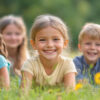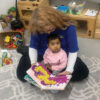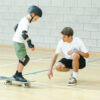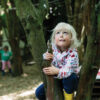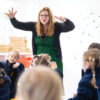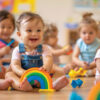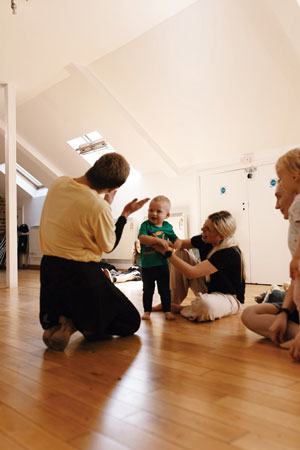
by Jess Child
JC Dance
You may be wondering; how can a dance class benefit my child in more ways than just keeping them busy for half an hour? Well, I am here to tell you about the amazing benefits of a dance class – not just for your mini human – but for you too!
Let’s break away from the myth that dance is just for girls and encourage movement exploration for ALL children. Dance is for everyone. If you have a body you can dance. As a preschooler, dance is less about learning particular steps and more about imagination, expression, socialising and aiding development, making it a perfect activity for any child.
Preschool dance benefits your child’s physical development by increasing their ability to perform motor skills. We might stand on one leg pretending to be a flamingo, whilst improving balance, or we could march like an astronaut on the moon or gallop sideways like a crab to enhance coordination. This also builds your child’s knowledge of their bodies, helping them gain control of their extremities and core muscles, ultimately increasing reflexes and reducing the likelihood of any bumps or falls.
Dancing as a toddler promotes the idea of good posture to your child. We like to see who can stand the tallest or who can have the straightest back whilst sitting with their imaginary string connected all the way from the top of their head to the ceiling. This early foundation sets them up for life, keeping force balanced throughout their fast-growing little bodies. The distribution of force on muscles, bones and ligaments that good posture brings, not only reduces risks of injury but also builds confidence and creates more space for the organs, improving breathing and digestion. All of these aspects give your child greater awareness of their bodies in space, helping bodies self-regulate. What’s not to love?
Dance classes will give your child the opportunity to move to many different types of music enhancing their musicality. Using music and stories and linking physical movements to imaginary ideas and finding a teacher who is passionate and encouraging, can help your preschooler to create a magical world and a safe space.
Preschool dance gives them the opportunity to interact with new children, grown-ups and teachers, ultimately helping them improve on social skills. Toddlers will continue to learn how to follow instructions and are able to start understanding taking turns and sharing with other children, they may take turns dancing one at a time, or wait their turn to get their maracas. This means each child has the opportunity to have one to one focus from the teacher, ensuring they all have a moment in the class to feel special and valued as an individual. This opportunity to move their bodies to music, along with a positive learning environment can help children’s confidence skyrocket. In turn it can increase their independence, maybe by tidying up or dancing by themselves. Every child is different but at this age children are sponges for information, taking it all in, in their own way. With the use of repetition in dance classes your child is able to learn new words, new ways of moving and find a passion for something new and exciting.
Now onto you. How can a preschool dance class benefit you? This is time for you to meet other grown-ups with children of the same age, the ability to connect with others going through similar experiences can uplift us, support us and reduce stress. These classes also offer valuable one on one time with your little one without the outside pressures of being a grown-up. Dance classes are a space where you and your mini human can bond and enjoy time together without having to worry about ‘life stuff’.
Time with your preschooler is short and precious, make the most of every second and most of all make time to enjoy it!
Jess Child runs BalletBees – dancing together, growing together. Where every child is welcomed, valued and supported in their movement journey. www.jcdanceclasses.com 07305 228770 info@jcdanceclasses.com @jess_jcdanceyoga

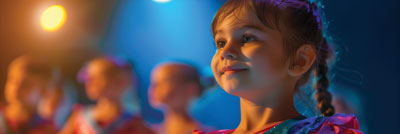
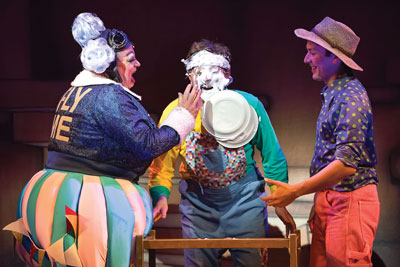
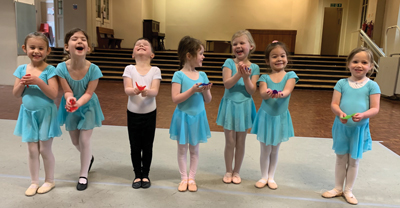
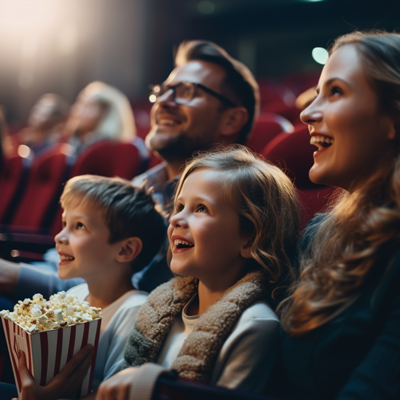
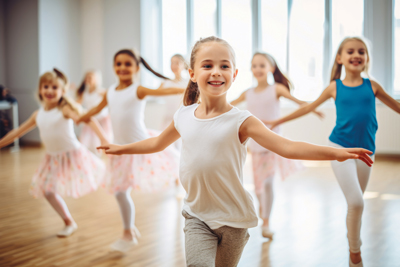

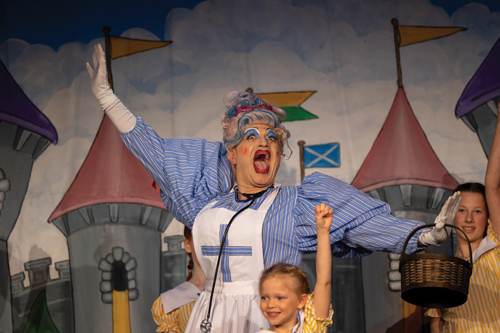
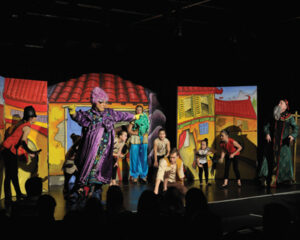 It starts the minute you arrive at the venue. The staff and volunteers all have bright eyes and wide grins that actually look genuine, the café or kiosk is serving Christmas-themed cookies and cupcakes and Christmas pudding flavoured ice-cream. The bar is serving large glasses of everything, including delicious mulled wine. The smell of excited anticipation is everywhere.
It starts the minute you arrive at the venue. The staff and volunteers all have bright eyes and wide grins that actually look genuine, the café or kiosk is serving Christmas-themed cookies and cupcakes and Christmas pudding flavoured ice-cream. The bar is serving large glasses of everything, including delicious mulled wine. The smell of excited anticipation is everywhere.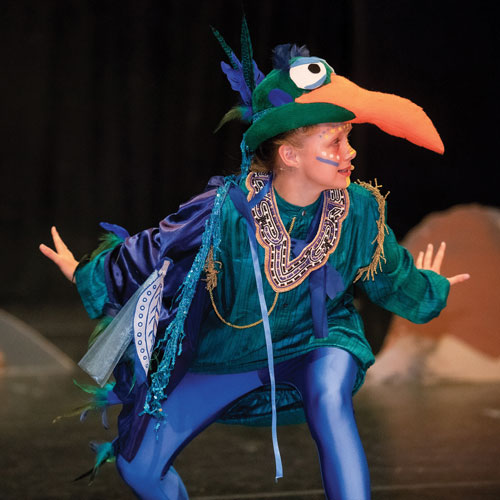
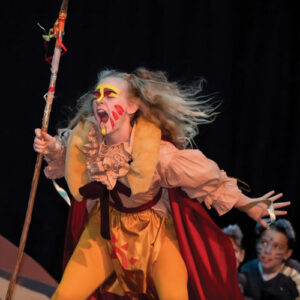 If every opportunity is seized, there is wonderful scope for creating a powerful cross-curricular approach to developing a show. By learning about the literature, history, art, music, and dance that surrounds a story, we cultivate an appreciation for traditions, beliefs, design and stagecraft. As part of the preparations for our school’s recent production of The Lion King this term, the girls studied the patterns, designs and colours used in African prints before creating their own designs for fabrics, masks and marketing materials. They studied each character in the script and crafted symbols and emblems to represent them; meticulously forming links between characters who were related or belonged to the same group. Later, these were hand printed onto fabrics using block printing techniques so that they could finally be made into the cast’s costumes. Through workshops with external educators, they learnt about the importance and significance of symbolism in Adinkra printing; the rhythms and collective energy used in African drumming; and the storytelling techniques, as well as traditional movements, that can be generated through dance. We focused on the importance of recycling materials and made masks and props out of plastic milk bottles. This process was amazing – our girls were captivated by the transformation achieved with these simple objects. In addition to this, by singing songs in African dialects, we enhanced our understanding and appreciation of sounds and languages. The opportunities for extending the students’ learning through stimulating and interlinked topics are boundless.
If every opportunity is seized, there is wonderful scope for creating a powerful cross-curricular approach to developing a show. By learning about the literature, history, art, music, and dance that surrounds a story, we cultivate an appreciation for traditions, beliefs, design and stagecraft. As part of the preparations for our school’s recent production of The Lion King this term, the girls studied the patterns, designs and colours used in African prints before creating their own designs for fabrics, masks and marketing materials. They studied each character in the script and crafted symbols and emblems to represent them; meticulously forming links between characters who were related or belonged to the same group. Later, these were hand printed onto fabrics using block printing techniques so that they could finally be made into the cast’s costumes. Through workshops with external educators, they learnt about the importance and significance of symbolism in Adinkra printing; the rhythms and collective energy used in African drumming; and the storytelling techniques, as well as traditional movements, that can be generated through dance. We focused on the importance of recycling materials and made masks and props out of plastic milk bottles. This process was amazing – our girls were captivated by the transformation achieved with these simple objects. In addition to this, by singing songs in African dialects, we enhanced our understanding and appreciation of sounds and languages. The opportunities for extending the students’ learning through stimulating and interlinked topics are boundless.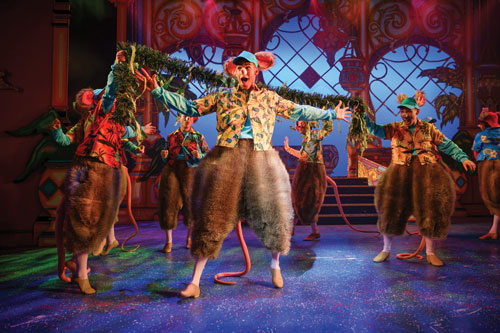
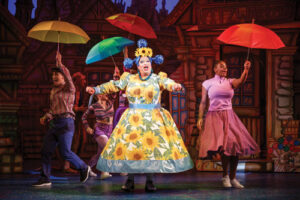 Children’s empathy and emotional intelligence are developed through everyday interaction but they are also nurtured by music, books, and in particular, watching live theatre performances. When watching characters interact on stage, we as the audience connect with them and experience what they are thinking and feeling as if we were thinking or feeling it ourselves – we are practicing how to understand others. Having a safe space to explore difficult emotions is essential to strengthening empathetic muscles and live theatre provides the perfect platform for this. Bill English, founder of the San Francisco Playhouse, states that: “Theatre is like a gym for empathy. It’s where we go to build up the muscles of compassion, to practice listening and understanding and engaging with people that are not just like ourselves. We practice sitting down, paying attention and learning from other people’s actions. We practice caring.”
Children’s empathy and emotional intelligence are developed through everyday interaction but they are also nurtured by music, books, and in particular, watching live theatre performances. When watching characters interact on stage, we as the audience connect with them and experience what they are thinking and feeling as if we were thinking or feeling it ourselves – we are practicing how to understand others. Having a safe space to explore difficult emotions is essential to strengthening empathetic muscles and live theatre provides the perfect platform for this. Bill English, founder of the San Francisco Playhouse, states that: “Theatre is like a gym for empathy. It’s where we go to build up the muscles of compassion, to practice listening and understanding and engaging with people that are not just like ourselves. We practice sitting down, paying attention and learning from other people’s actions. We practice caring.”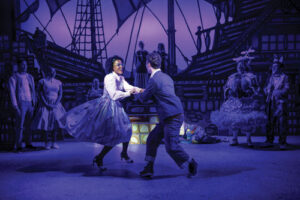 to the theatre can be a fantastic way of making lasting memories and spending real quality time together. For children (and grownups!) going to see a play feels like something special, something out of the ordinary. Whether it’s the grandeur of the building itself, finding your red velvet seats or begging for a tub of ice cream in the intermission, the experience of going to the theatre is something unique before the play has even begun.
to the theatre can be a fantastic way of making lasting memories and spending real quality time together. For children (and grownups!) going to see a play feels like something special, something out of the ordinary. Whether it’s the grandeur of the building itself, finding your red velvet seats or begging for a tub of ice cream in the intermission, the experience of going to the theatre is something unique before the play has even begun.

